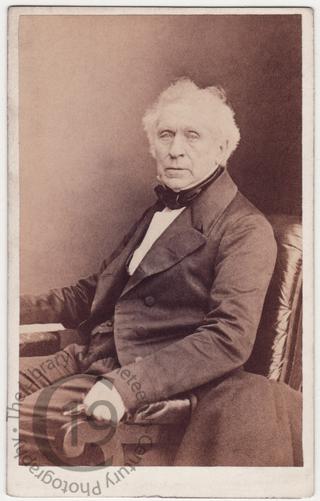
Sir David Brewster
A carte-de-visite portrait of the Scottish inventor Sir David Brewster (1781-1868)/
Among his many other achievements, Sir David Brewster invented the kaleidoscope, made major improvements to the stereoscope, and discovered the polarization phenomenon of light reflected at specific angles. He also designed a novel optical system for lighthouses (1835) and studied fluorescence in plant chlorophyll.
Brewster was elected to the Royal Society in 1815 and eventually was one of only a handful of scientists to be awarded all three principal medals of the Society. For his work in optics, Brewster was awarded the Copley Medal in 1815, the Rumford Medal in 1818, and the Royal Medal in 1830. He also was a founder of the British Association for the Advancement of Science. He became principal of St. Andrew’s (1838) and then Edinburgh University (1859). He was knighted in 1831.
Brewster was fascinated with photography – he suggested it’s use to David Hill as an aid to his painting, and he corresponded with Fox Talbot, clearly favouring Talbot’s calotype process over the daguerreotype: While a Daguerreotype picture is much more sharp and accurate in its details than a Calotype, the latter possesses the advantage of giving a greater breadth and massiveness to its landscapes and portraits.’ Sir David Brewster was elected first President of the Photographic Society of Scotland, from its foundation in 1856, and remained its President until the Society was wound up in 1873.
Photographed by T. Rodger of St Andrews.
Code: 124366




